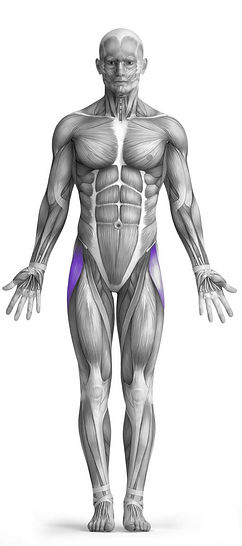Kneeling Posterior Hip Capsule Mobilization 101 Video Tutorial
0

Exercise Synopsis
Target Muscle Group
Hip Flexors
Secondary Targets
Execution
Compound
Force Type
Dynamic Stretching
Required Equipment
Bodyweight
Fitness Level
Beginner
Variations
None
Alternatives
None
Timer
Hour
Minute
Second
Stopwatch
00:00:00:00
Overview
Kneeling Posterior Hip Capsule Mobilization is a mobility exercise that targets the hip flexors and engages the glutes as secondary muscles. This movement helps improve hip joint mobility by focusing on the posterior hip capsule, which can become tight due to prolonged sitting or inactivity. To perform the exercise, kneel on the floor, placing one foot forward in a lunge position, and gently push your hips forward while keeping your torso upright. This movement, done with just your bodyweight, promotes flexibility and mobility in the hip region, helping reduce tightness and improve range of motion, especially in the hip flexors and glutes.
How to Perform
Start in a kneeling position with one knee on the floor and the opposite leg extended straight behind you.
Shift your weight onto the knee that remains on the ground, ensuring it stays bent while the extended leg is straight.
Rotate the hip of your extended leg outward by turning your foot inward, making sure the shin moves in the opposite direction.
Gently move your leg in small, controlled circles to locate any areas of tightness or restriction in the hip.
Keep breathing steadily and relax throughout the movement.
Perform this for the designated duration or number of repetitions, then switch sides.
★ Bonus: For exercises that involve external weights (such as dumbbells, barbells, or machines), the One Rep Max (1RM) calculator can help you estimate your maximum lifting capacity. Use it to track your strength progress and adjust your training for optimal results.
Tips
Based on your hip structure, you might need to keep your shin pointing straight down rather than rotating it outward.
You should experience a noticeable stretch at the top of your glutes during the movement.
If you're having trouble feeling the stretch in your glutes, try adjusting the position of your foot or shifting your weight further into the hip to find the right angle.
How Not to Perform
Avoid Overextending the Hip: Do not push your hips too far forward, as this can cause strain on the lower back. Focus on a controlled, gentle movement to avoid over-stretching and injury.
Do Not Round the Back: Keep your torso upright and avoid arching or rounding your back. This ensures that the stretch focuses on the hip area rather than causing unnecessary tension in the spine.
Avoid Using Momentum: Refrain from using any jerking or swinging movements. The goal is a slow, controlled oscillation to engage the hip flexors and glutes effectively, not to rely on momentum.
Do Not Lock the Knees: Ensure that the knee on the floor remains soft and slightly bent. Locking the knee can disrupt the alignment and lead to joint strain.
Avoid Shifting Weight to the Opposite Side: Keep your weight centered over the knee on the floor to prevent leaning too much to one side, which can take focus away from the target muscles and lead to imbalance.
Do Not Forget to Breathe: Holding your breath can increase muscle tension and hinder your ability to perform the movement properly. Focus on maintaining steady, normal breathing.
Do Not Overrotate the Leg: Avoid excessive external rotation of the leg. The rotation should be mild and comfortable to prevent unnecessary stress on the hip joint.
Don’t Rush Through the Movement: Take your time to perform each rep slowly. Rushing through can prevent you from feeling the targeted stretch and reduce the effectiveness of the exercise.
Variations
Variations of fitness exercises refer to different ways of performing a specific exercise or movement to target various muscle groups, intensities, or goals. These variations aim to challenge the body differently, prevent plateaus, and cater to individuals with varying fitness levels.
Alternatives
Alternative exercises in fitness refer to different movements or activities that target similar muscle groups or serve the same training purpose as the primary exercise. These alternative exercises can be used as substitutes when the original exercise is unavailable or challenging to perform due to various reasons such as equipment limitations, injuries, or personal preferences.



